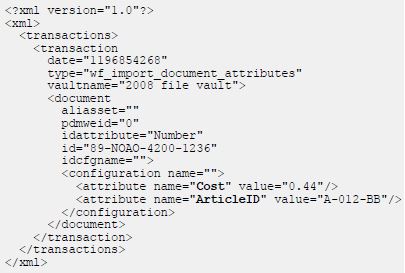Update Version-Free Variables in SOLIDWORKS PDM
The tools that we have at InFlow Technology are second to none. I’ve done posts before about our PigeonHole and PDMSave tools. Additionally, we have great tools like Convert and our Productivity Pack. Now, I want to introduce you to a tool that has flown under-the-radar so far: our Version-Free Property Updater. With the Version-Free Property Updater, you can quickly and efficiently update a list of version-free variables within SOLIDWORKS PDM.
How do we update those variables today?
I’m glad you asked! If the file is currently checked into the vault, all you have to do is go to the data card and update the value. If you aren’t sure which values are version-free, there’s an easy way to tell. When you open the data card, if the values are disabled and you can’t change them, they are not version-free. After you change the fields, click the Save button and the values will be updated.
This, however, can be problematic if two groups of people are updating these variables in two places. Here’s a common example: purchasing lives in the company ERP. They work all day pushing data and changing things like the cost to purchase and updating some descriptions. Flip to the other side, where you have your engineers working in PDM. It’s important that those engineers have the latest data and information for the projects they are working on. The Version-Free Property Updater tool updates version-free variables en mass, making sure those changes from other systems get pushed into PDM, keeping your data up-to-date and in-sync.
How the tool works
The short version of the story is by using XML. Essentially, the version-free updater will look for an XML file containing the files, along with information we need to track. This would be the file to update, the configuration of the file, and the variables to update. The tool runs on a schedule, so you can update version-free variables whenever you need to do so and however frequently you need. Here is an example of what this XML could look like.

Don’t worry if you are not an XML guru, I’m not either. We have a help file that comes with the tool, explaining what values are required and what these values are for. As an example, after we specify the configuration name of our file, we want to tell the tool which attributes (version-free variables) need updating. So, we put in an XML tag for the attribute name and then a tag for the value. Simple as that.
Tying it all together
This all is tied together by having your ERP system export this XML out when you need it. That XML is saved somewhere in the vault and is picked up by the tool as needed. Now we set the schedule for when our tool should scan for the XML and we have our ERP and PDM systems linked together.
This tool is exactly what you need when you have different departments living in different systems, but also needing to share data. By using a universal language, like XML, we make it quick and easy to pull data from systems like ERP and push that data back into PDM. Now, InFlow has made it easier than ever to mass-update version-free variables and keep your systems working together.
~Nick

 Blog
Blog